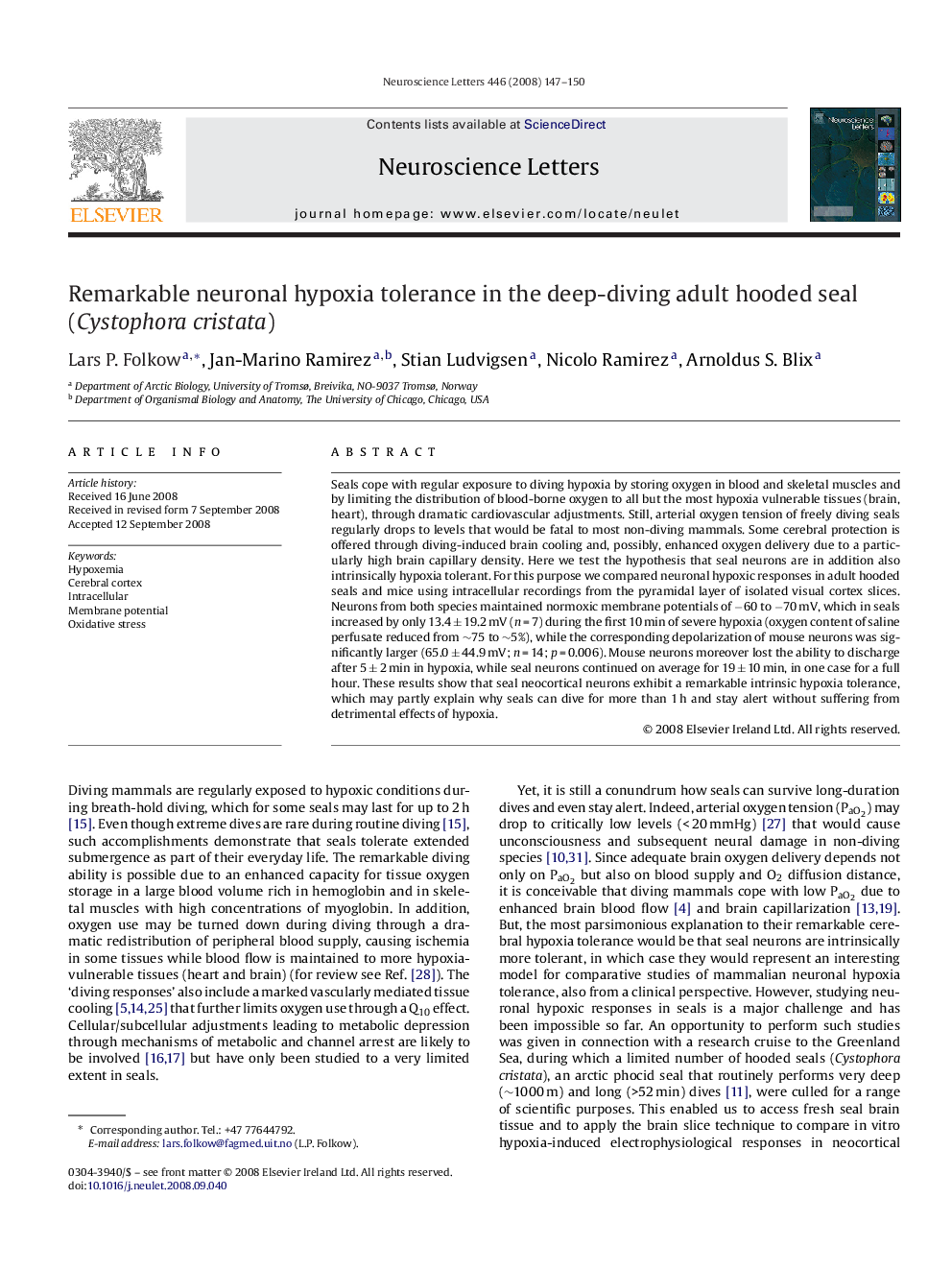| Article ID | Journal | Published Year | Pages | File Type |
|---|---|---|---|---|
| 4347928 | Neuroscience Letters | 2008 | 4 Pages |
Seals cope with regular exposure to diving hypoxia by storing oxygen in blood and skeletal muscles and by limiting the distribution of blood-borne oxygen to all but the most hypoxia vulnerable tissues (brain, heart), through dramatic cardiovascular adjustments. Still, arterial oxygen tension of freely diving seals regularly drops to levels that would be fatal to most non-diving mammals. Some cerebral protection is offered through diving-induced brain cooling and, possibly, enhanced oxygen delivery due to a particularly high brain capillary density. Here we test the hypothesis that seal neurons are in addition also intrinsically hypoxia tolerant. For this purpose we compared neuronal hypoxic responses in adult hooded seals and mice using intracellular recordings from the pyramidal layer of isolated visual cortex slices. Neurons from both species maintained normoxic membrane potentials of −60 to −70 mV, which in seals increased by only 13.4 ± 19.2 mV (n = 7) during the first 10 min of severe hypoxia (oxygen content of saline perfusate reduced from ∼75 to ∼5%), while the corresponding depolarization of mouse neurons was significantly larger (65.0 ± 44.9 mV; n = 14; p = 0.006). Mouse neurons moreover lost the ability to discharge after 5 ± 2 min in hypoxia, while seal neurons continued on average for 19 ± 10 min, in one case for a full hour. These results show that seal neocortical neurons exhibit a remarkable intrinsic hypoxia tolerance, which may partly explain why seals can dive for more than 1 h and stay alert without suffering from detrimental effects of hypoxia.
